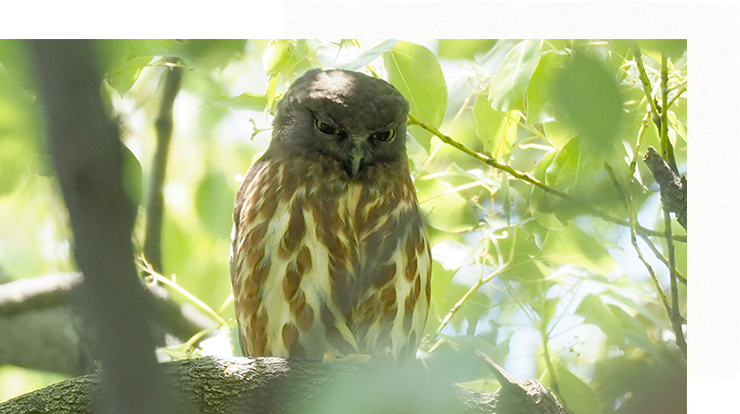A diversity of species inhabits this sanctuary of nature
The vast nature of Kyoto Gyoen is home to a variety of species. Birds and insects reside in the woods and fish swim in the ponds. The garden also offers a great learning environment for children.
Every year, from around late April to around October, the brown hawk-owl (Ninox scutulata) visits and nests in the large camphor trees near Munakata Jinja Shrine. During this period, the owls sometimes hoot from the evening through the night. From July, pairs of parent owls are occasionally spotted visiting the garden with their chicks side by side.
The garden is also a habitat for species with links to court noble culture. These include scaly thrush (Zoothera dauma), black-crowned night heron (Nycticorax nycticorax), and common kingfisher (Alcedo atthis) birds. According to one theory, the tales of the nue, the strange legendary animal of Japanese folklore that is said to haunt the Kyoto Imperial Palace grounds, came about from the cry of the scaly thrush. In addition, the story in The Tale of the Heike about a heron (sagi) that was conferred the fifth rank by Emperor Daigo is said to be the origin of the name black-crowned night-heron (goisagi). Furthermore, the “sui” (翠) character in Shusui-tei Tea Ceremony House (拾翠亭), located near Kujo Pond, means common kingfisher, which visit the ponds in the garden.
The Dragonfly Pond created as a biotope (nature observation garden) is a habitat for many dragonflies and nature observation sessions are held several times a year.

Brown hawk-owl (Ninox scutulata)


